
Keywords: driving y

|
CRISPR-Cas9 effectors facilitate generation of single-sex litters and sex-specific phenotypesC. Douglas, V. Maciulyte, J. Zohren, D. M. Snell, S. K. Mahadevaiah, O. A. Ojarikre, P. J. I. Ellis and J. M. A. Turner, Nature Communications, 12:6926. 2021.
Animals are essential genetic tools in scientific research and global resources in agriculture. In both arenas, a single sex is often required in surplus. The ethical and financial burden of producing and culling animals of the undesired sex is considerable. Using the mouse as a ... Keywords: driving y, gene drive guidance, gene drive safety, gene drive synthetic, homing endonuceases, regulation, synthetic homing drive |

|
Gene drives and population persistence vs elimination: the impact of spatial structure and inbreeding at low densityP. J. Beaghton and A. Burt, bioRxiv, 2021.11.11.468225. 2021.
Synthetic gene drive constructs are being developed to control disease vectors, invasive species, and other pest species. In a well-mixed random mating population a sufficiently strong gene drive is expected to eliminate a target population, but it is not clear whether the same ... Keywords: driving y, gene drive guidance, gene drive safety, gene drive synthetic, homing endonuceases, regulation, synthetic homing drive |
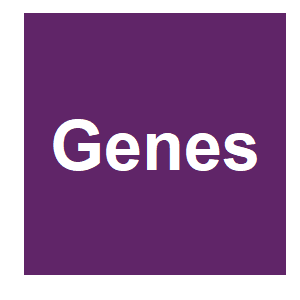
|
Flavors of Non-Random Meiotic Segregation of Autosomes and Sex ChromosomesF. Pajpach, T. Wu, L. Shearwin-Whyatt, K. Jones and F. Grützner, Genes, 12. 2021.
Segregation of chromosomes is a multistep process occurring both at mitosis and meiosis to ensure that daughter cells receive a complete set of genetic information. Critical components in the chromosome segregation include centromeres, kinetochores, components of sister chromatid ... Keywords: driving y, gene drive guidance, gene drive safety, gene drive synthetic, homing endonuceases, regulation, synthetic homing drive |

|
Haldane’s duel: intragenomic conflict, selfish Y chromosomes and speciationS. W. Roy, Trends in Genetics, 2021.
Haldane?s rule, which states that the heterogametic sex (XY or ZW females) fares more poorly in interspecific hybrids, is generally attributed to absence of one of the two species' X/Z chromosomes. However, Haldane?s rule is also observed in mouse placentas despite paternal X ... Keywords: driving y, gene drive guidance, gene drive safety, gene drive synthetic, homing endonuceases, regulation, synthetic homing drive |

|
The New Yorker Magazine: Gene Drives as a Tool for Saving NatureE. Heber, Island Conservation, 2021.
In a recent New Yorker Magazine article, entitled “CRISPR and the Splice to Survive,” journalist and best-selling author Elizabeth Kolbert dives into the world of gene drive research. She touches on aspects of gene drive research from altering the toxin produced by cane toads ... Keywords: driving y, gene drive guidance, gene drive safety, gene drive synthetic, homing endonuceases, regulation, synthetic homing drive |
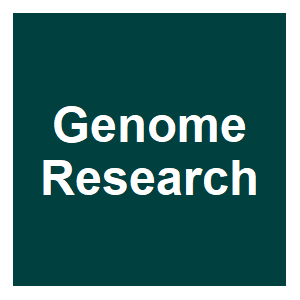
|
Sequence analysis in Bos taurus reveals pervasiveness of X–Y arms races in mammalian lineagesJ. F. Hughes, H. Skaletsky, T. Pyntikova, N. Koutseva, T. Raudsepp, L. G. Brown, D. W. Bellott, T.-J. Cho, S. Dugan-Rocha, Z. Khan, C. Kremitzki, C. Fronick, T. A. Graves-Lindsay, L. Fulton, W. C. Warren, R. K. Wilson, E. Owens, J. E. Womack, W. J. Murphy, Genome Research, 2020.
Here, we provide evidence that suppression of X–Y crossing-over unleashed a second dynamic: selfish X–Y arms races that reshaped the sex chromosomes in mammals as different as cattle, mice, and men. Using super-resolution sequencing, we explore the Y Chromosome of Bos taurus ... Keywords: driving y, gene drive guidance, gene drive safety, gene drive synthetic, homing endonuceases, regulation, synthetic homing drive |

|
The bull Y chromosome has evolved to bully its way into gametesWhitehead Institute for Biomedical Research, Phys Org, 2020.
In a new study, published Nov. 18 in the journal Genome Research, scientists in the lab of Whitehead Institute Member David Page present the first ever full, high-resolution sequence of the Y chromosome of a Hereford bull. The research, more than a decade in the making, suggests ... Keywords: driving y, gene drive guidance, gene drive safety, gene drive synthetic, homing endonuceases, regulation, synthetic homing drive |

|
A fly model establishes distinct mechanisms for synthetic CRISPR/Cas9 sex distortersB. Fasulo, A. Meccariello, M. Morgan, C. Borufka, P. A. Papathanos and N. Windbichler, PLOS Genetics, 16:e1008647. 2020.
Author summary Harmful insect populations can be eliminated for a lack of females if they are made to produce mostly male offspring. There are genes that occur naturally that make males produce mostly sons and, although we don’t know exactly how they work, this appears to ... Keywords: driving y, gene drive guidance, gene drive safety, gene drive synthetic, homing endonuceases, regulation, synthetic homing drive |

|
The potential for a released autosomal X-shredder becoming a driving-Y chromosome and invasively suppressing wild populations of malaria mosquitoesAlcalay, Y., S. Fuchs, R. Galizi, F. Bernardini, R. E. Haghighat-Khah, D. B. Rusch, J. R. Adrion, M. W. Hahn, P. Tortosa and P. A. Papathanos, bioRxiv, 2019:860551. 2019.
Synthetic sex-ratio distorters based on X-chromosome shredding are predicted to be more efficient than sterile males for population suppression of malaria mosquitoes using genetic control. X chromosome shredding operates through the targeted elimination of X-chromosome-bearing ... Keywords: driving y, gene drive guidance, gene drive safety, gene drive synthetic, homing endonuceases, regulation, synthetic homing drive |

|
Plasmodium falciparum (Haemosporodia: Plasmodiidae) and O’nyong-nyong virus development in a transgenic Anopheles gambiae (Diptera: Culicidae) strainMumford, J. D., C. A. Long, S. C. Weaver, K. Miura, E. Wang, R. Rotenberry, E. M. Dotson and M. Q. Benedict, " Journal of Medical Entomology, 56:936-941. 2019.
ransgenic Anopheles gambiae Giles (Diptera: Culicidae) mosquitoes have been developed that confer sexual sterility on males that carry a transgene encoding a protein which cuts ribosomal DNA. A relevant risk concern with transgenic mosquitoes is that their capacity to transmit ... Keywords: driving y, gene drive guidance, gene drive safety, gene drive synthetic, homing endonuceases, regulation, synthetic homing drive |
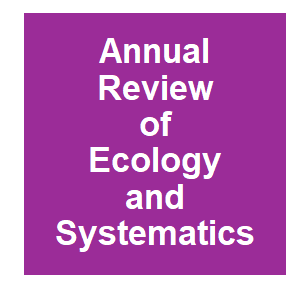
|
Genetic Control of MosquitoesAlphey, L., Annual Review of Entomology, 59:205-224. 2019.
Genetics can potentially provide new, species-specific, environmentally friendly methods for mosquito control. Genetic control strategies aim either to suppress target populations or to introduce a harm-reducing novel trait. Different approaches differ considerably in their ... Keywords: driving y, gene drive guidance, gene drive safety, gene drive synthetic, homing endonuceases, regulation, synthetic homing drive |
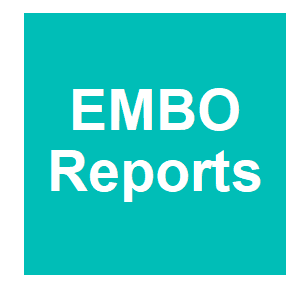
|
A genetic system for biasing the sex ratio in miceYosef, IEB, Liat; Globus, Rea; Shlomovitz, Inbar; Munitz, Ariel; Gerlic, Motti; Qimron, Udi, EMBO reports, 20:e48269. 2019.
Biasing the sex ratio of populations of different organisms, including plants, insects, crustacean, and fish, has been demonstrated by genetic and non-genetic approaches. However, biasing the sex ratio of mammalian populations has not been demonstrated genetically. Here, we ... Keywords: driving y, gene drive guidance, gene drive safety, gene drive synthetic, homing endonuceases, regulation, synthetic homing drive |

|
Genetic manipulation of sex ratio in mammals: the Reaper comes for MickeySmanski, MJZ, David, EMBO reports, 20:e48577. 2019.
In most animals, sexual reproduction results in a 1:1 ratio of females to males. For several sectors of agriculture, for example, milk or egg production, only a single sex is needed. Biasing the sex ratio so that only offspring of the desired sex are produced has the potential to ... Keywords: driving y, gene drive guidance, gene drive safety, gene drive synthetic, homing endonuceases, regulation, synthetic homing drive |

|
Gene drive to reduce malaria transmission in sub-Saharan AfricaBurt, AC, Mamadou; Crisanti, Andrea; Diabate, Abdoulaye; Kayondo, Jonathan K., Journal of Responsible Innovation, 5:S66-S80. 2018.
Despite impressive progress, malaria continues to impose a substantial burden of mortality and morbidity, particularly in sub-Saharan Africa, and new tools will be needed to achieve elimination. Gene drive is a natural process by which some genes are inherited at a ... Keywords: driving y, gene drive guidance, gene drive safety, gene drive synthetic, homing endonuceases, regulation, synthetic homing drive |
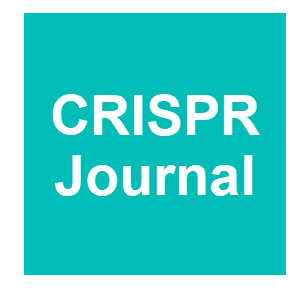
|
Redkmer: An assembly-free pipeline for the identification of abundant and specific X-chromosome target sequences for X-shredding by CRISPR endonucleasesPapathanos, PAW, Nikolai, CRISPR Journal, 1:88-98. 2018.
CRISPR-based synthetic sex ratio distorters, which operate by shredding the X-chromosome during male meiosis, are promising tools for the area-wide control of harmful insect pest or disease vector species. X-shredders have been proposed as tools to suppress insect populations by ... Keywords: driving y, gene drive guidance, gene drive safety, gene drive synthetic, homing endonuceases, regulation, synthetic homing drive |
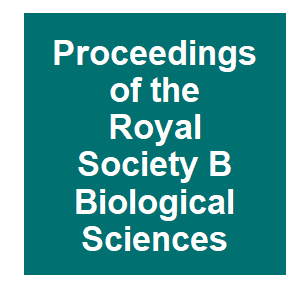
|
Self-limiting population genetic control with sex-linked genome editorsBurt, AD, Anne, Proceedings of the Royal Society B: Biological Sciences, 285:20180776. 2018.
In male heterogametic species the Y chromosome is transmitted solely from fathers to sons, and is selected for based only on its impacts on male fitness. This fact can be exploited to develop efficient pest control strategies that use Y-linked editors to disrupt the fitness of ... Keywords: driving y, gene drive guidance, gene drive safety, gene drive synthetic, homing endonuceases, regulation, synthetic homing drive |
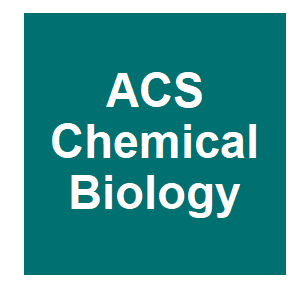
|
Gene drive: Evolved and syntheticBurt, AC, Andrea, ACS Chemical Biology, 13:343-346. 2018.
Drive is a process of accelerated inheritance from one generation to the next that allows some genes to spread rapidly through populations even if they do not contribute to—or indeed even if they detract from—organismal survival and reproduction. Genetic elements that can ... Keywords: driving y, gene drive guidance, gene drive safety, gene drive synthetic, homing endonuceases, regulation, synthetic homing drive |

|
Sry gene drive for rodent control: Reply to Gemmell and TompkinsKanavy, DS, M., Trends in Ecology & Evolution, 32:315-316. 2017.
We would like to thank Gemmell and Tompkins for their interest and comments onthe articlebyPiaggioet al. [1].Theissues raised by Gemmell and Tompkins [2] are very pertinent, and they correctly identified that the format of the article did not lend itself to a comprehensive ... Keywords: driving y, gene drive guidance, gene drive safety, gene drive synthetic, homing endonuceases, regulation, synthetic homing drive |

|
Vector control with driving Y chromosomes: modelling the evolution of resistanceBeaghton, AB, P. J.; Burt, A., Malaria Journal, 16:286. 2017.
: The introduction of new malaria control interventions has often led to the evolution of resistance, both of the parasite to new drugs and of the mosquito vector to new insecticides, compromising the efficacy of the interventions. Recent progress in molecular and population ... Keywords: driving y, gene drive guidance, gene drive safety, gene drive synthetic, homing endonuceases, regulation, synthetic homing drive |
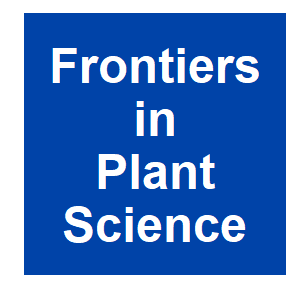
|
B Chromosomes – A matter of chromosome driveHouben, A, Frontiers in Plant Science, 8:210. 2017.
B chromosomes are supernumerary chromosomes which are often preferentially inherited, deviating from usual Mendelian segregation. The balance between the so-called chromosome drive and the negative effects that the presence of Bs applies on the fitness of their host determines ... Keywords: driving y, gene drive guidance, gene drive safety, gene drive synthetic, homing endonuceases, regulation, synthetic homing drive |

|
Gene drive through a landscape: Reaction-diffusion models of population suppression and elimination by a sex ratio distorterBeaghton, AB, P. J.; Burt, A., Theoretical Population Biology, 108:51-69. 2016.
Some genes or gene complexes are transmitted from parents to offsprihg at a greater-than-Mendelian rate, and can spread and persist in populations even if they cause some harm to the individuals carrying them. Such genes may be useful for controlling populations or species that ... Keywords: driving y, gene drive guidance, gene drive safety, gene drive synthetic, homing endonuceases, regulation, synthetic homing drive |
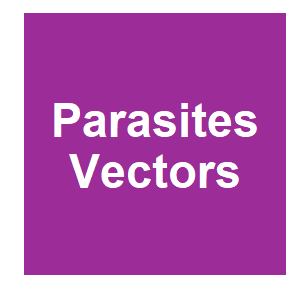
|
Mechanisms of sex determination and transmission ratio distortion in Aedes aegyptiHoang, KPT, T. M.; Ho, T. X.; Le, V. S., Parasites & Vectors, 9:49. 2016.
: More effective mosquito control strategies are urgently required due to the increasing prevalence of insecticide resistance. The sterile insect technique (SIT) and the release of insects carrying a dominant lethal allele (RIDL) are two proposed methods for ... Keywords: driving y, gene drive guidance, gene drive safety, gene drive synthetic, homing endonuceases, regulation, synthetic homing drive |
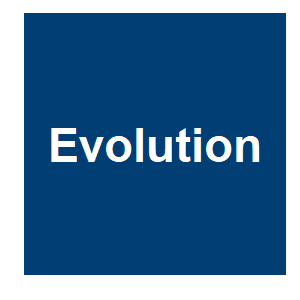
|
Coevolutionary dynamics of polyandry and sex-linked meiotic driveHolman, LP, T. A. R.; Wedell, N.; Kokko, H., Evolution, 69:709-720. 2015.
Segregation distorters located on sex chromosomes are predicted to sweep to fixation and cause extinction via a shortage of one sex, but in nature they are often found at low, stable frequencies. One potential resolution to this longstanding puzzle involves female multiple mating ... Keywords: driving y, gene drive guidance, gene drive safety, gene drive synthetic, homing endonuceases, regulation, synthetic homing drive |
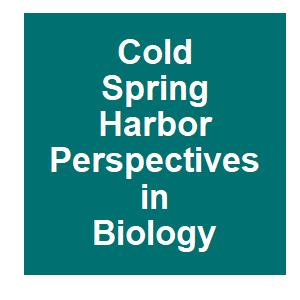
|
Sex chromosome driveHelleu, QG, P. R.; Montchamp-Moreau, C., Cold Spring Harbor Perspectives in Biology, 7:a017616. 2015.
Sex chromosome drivers are selfish elements that subvert Mendel's first law of segregation and therefore are over represented among the products of meiosis. The sex-biased progeny produced then fuels an extended genetic conflict between the driver and the rest of the genome. Many ... Keywords: driving y, gene drive guidance, gene drive safety, gene drive synthetic, homing endonuceases, regulation, synthetic homing drive |

|
On the origin of sex chromosomes from meiotic driveUbeda, FP, M. M.; Wild, G., Proceedings of the Royal Society B-Biological Sciences, 282:20141932. 2015.
Most animals and many plants make use of specialized chromosomes (sex chromosomes) to determine an individual's sex. Best known are the XY and ZW sex-determination systems. Despite having evolved numerous times, sex chromosomes present something of an evolutionary puzzle. At ... Keywords: driving y, gene drive guidance, gene drive safety, gene drive synthetic, homing endonuceases, regulation, synthetic homing drive |
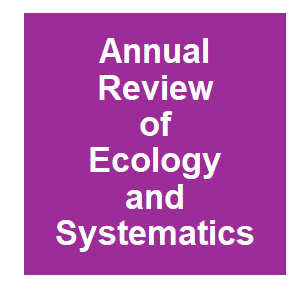
|
Genetic Control of Mosquitoes.Alphey, L., Annual Review of Entomology, 59:205-224. 2014.
Genetics can potentially provide new, species-specific, environmentally friendly methods for mosquito control. Genetic control strategies aim either to suppress target populations or to introduce a harm-reducing novel trait. Different approaches differ considerably in their ... Keywords: driving y, gene drive guidance, gene drive safety, gene drive synthetic, homing endonuceases, regulation, synthetic homing drive |

|
A synthetic sex ratio distortion system for the control of the human malaria mosquitoGalizi, RD, L. A.; Menichelli, M.; Bernardini, F.; Deredec, A.; Burt, A.; Stoddard, B. L.; Windbichler, N.; Crisanti, A., Nature Communications, 5:3977. 2014.
It has been theorized that inducing extreme reproductive sex ratios could be a method to suppress or eliminate pest populations. Limited knowledge about the genetic makeup and mode of action of naturally occurring sex distorters and the prevalence of co-evolving suppressors has ... Keywords: driving y, gene drive guidance, gene drive safety, gene drive synthetic, homing endonuceases, regulation, synthetic homing drive |
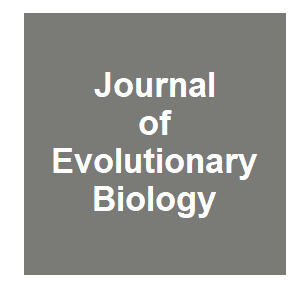
|
Sex-ratio meiotic drive and interspecific competitionUnckless, RLC, A. G., Journal of Evolutionary Biology, 27:1513-1521. 2014.
It has long been known that processes occurring within a species may impact the interactions between species. For example, as competitive ability is sensitive to parameters including reproductive rate, carrying capacity and competition efficiency, the outcome of interspecific ... Keywords: driving y, gene drive guidance, gene drive safety, gene drive synthetic, homing endonuceases, regulation, synthetic homing drive |
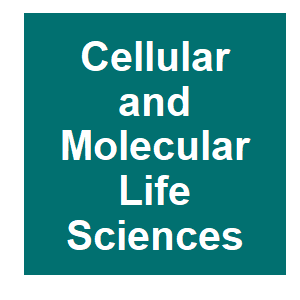
|
Evolution and biology of supernumerary B chromosomesHouben, AB-M, A. M.; Klemme, S.; Timmis, J. N., Cellular and Molecular Life Sciences, 71:467-478. 2014.
B chromosomes (Bs) are dispensable components of the genome exhibiting non-Mendelian inheritance and have been widely reported on over several thousand eukaryotes, but still remain an evolutionary mystery ever since their first discovery over a century ago [1]. Recent advances in ... Keywords: driving y, gene drive guidance, gene drive safety, gene drive synthetic, homing endonuceases, regulation, synthetic homing drive |
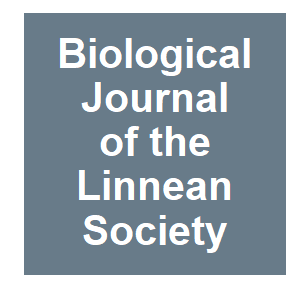
|
Changes in sperm tail development associated with Y chromosome meiotic drive leading to an excess of males in the medfly Ceratitis capitata (Diptera: Tephritidae)Rendon, PAB, R. D.; Wood, R. J., Biological Journal of the Linnean Society, 101:351-359. 2010.
The Mediterranean fruit fly Ceratitis capitata (Wied.) normally produces the sexes in equal ratio but strains carrying the Y chromosome meiotic drive MP (male-producing) factor show an excess of males. This is associated with a loss of sperm, and abnormal sperm structure in terms ... Keywords: driving y, gene drive guidance, gene drive safety, gene drive synthetic, homing endonuceases, regulation, synthetic homing drive |
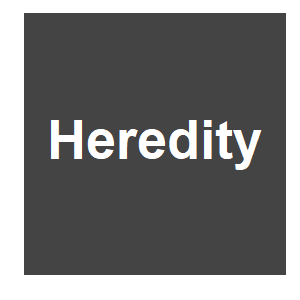
|
Segregation distortion and the evolution of sex-determining mechanismsKozielska, MW, F. J.; Beukeboom, L. W.; Pen, I., Heredity, 104:100-112. 2010.
Segregation distorters are alleles that distort normal segregation in their own favour. Sex chromosomal distorters lead to biased sex ratios, and the presence of such distorters, therefore, may induce selection for a change in the mechanism of sex determination. The evolutionary ... Keywords: driving y, gene drive guidance, gene drive safety, gene drive synthetic, homing endonuceases, regulation, synthetic homing drive |

|
The population genetics of using homing endonuclease genes in vector and pest managementDeredec, AB, A.; Godfray, H. C. J., Genetics, 179:2013-2026. 2008.
Homing endonuclease genes (HEGs) encode proteins that in the heterozygous state cause double- strand breaks in the homologous chromosome at the precise position opposite the HFG. If the double-strand break is repaired using the homologous chromosome, the HEG becomes homozygous, ... Keywords: driving y, gene drive guidance, gene drive safety, gene drive synthetic, homing endonuceases, regulation, synthetic homing drive |
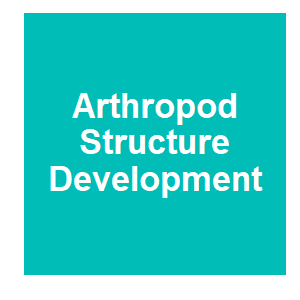
|
Meiotic drive by the Y-linked D gene in Aedes aegypti (L.) (Diptera : Culicidae) is associated with disruption of spermiogenesis, leading to premature senescence of spermatozoaOwusu-Daaku, KOB, R. D.; Wood, R. J., Arthropod Structure & Development, 36:233-243. 2007.
Y chromosome meiotic drive in the mosquito Aedes aegypti, due to the gene D (Distorter) in coupling with M (male determination) [the MD haplotype], is associated with spermiogenic disruption, leading to senescence, at a rate Proportionate to male excess. Spermiogenesis was ... Keywords: driving y, gene drive guidance, gene drive safety, gene drive synthetic, homing endonuceases, regulation, synthetic homing drive |

|
Introducing desirable transgenes into insect populations using Y-linked meiotic drive – A theoretical assessmentHuang, YXM, K.; Lloyd, A. L.; Gould, F., Evolution, 61:717-726. 2007.
The use of genetic drive mechanisms to replace native mosquito genotypes with individuals bearing antipathogen transgenes is a potential strategy for repressing insect transmission of human diseases such as malaria and dengue. Antipathogen transgenes have been developed and ... Keywords: driving y, gene drive guidance, gene drive safety, gene drive synthetic, homing endonuceases, regulation, synthetic homing drive |
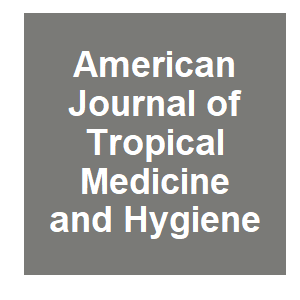
|
Cage trials using an endogenous meiotic drive gene in the mosquito Aedes aegypti to promote population replacementCha, SJM, A.; Chadee, D. D.; Severson, D. W., American Journal of Tropical Medicine and Hygiene, 74:62-68. 2006.
Control of arthropod-borne diseases based on population replacement with genetically modified noncompetent vectors has been proposed as a promising alternative to conventional control strategies. Due to likely fitness costs associated with vectors manipulated to carry ... Keywords: driving y, gene drive guidance, gene drive safety, gene drive synthetic, homing endonuceases, regulation, synthetic homing drive |

|
Population dynamics of an endogenous meiotic drive system in Aedes aegypti in TrinidadCha, SJC, D. D.; Severson, D. W., American Journal of Tropical Medicine and Hygiene, 75:70-77. 2006.
An endogenous meiotic drive system was previously reported to be segregating in the yellow fever mosquito Aedes aegypti L. (Diptera: Culicidae) population in Trinidad. The meiotic driver (M-D) is tightly linked to the male determining locus and selectively targets sensitive ... Keywords: driving y, gene drive guidance, gene drive safety, gene drive synthetic, homing endonuceases, regulation, synthetic homing drive |

|
Male biased sex ratio in the Mediterranean fruit fly Ceratitis capitata, an example of Y-chromosome meiotic driveShahjahan, RMR, P. A.; Cook, L. M.; Wood, R. J., Heredity, 96:464-470. 2006.
A case of Y-chromosome meiotic drive is reported in the Mediterranean fruit fly Ceratitis capitata. It arose in an irradiated male and results in excess of males. Male excess is inherited strictly from father to son. A Y-linked factor MP (male producer) is proposed. Higher drive ... Keywords: driving y, gene drive guidance, gene drive safety, gene drive synthetic, homing endonuceases, regulation, synthetic homing drive |
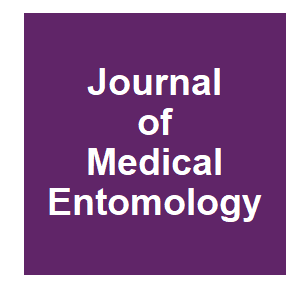
|
Reinvestigation of an endogenous meiotic drive system in the mosquito, Aedes aegypti (Diptera : Culicidae)Mori, AC, D. D.; Graham, D. H.; Severson, D. W., Journal of Medical Entomology, 41:1027-1033. 2004.
We have initiated efforts to determine the molecular basis for the M-D meiotic drive system in the mosquito, Aedes aegypti. The effect of the M-D gene is a highly male-biased sex ratio, but varies depending on the frequency and sensitivity of a susceptible responder m(s) allele. ... Keywords: driving y, gene drive guidance, gene drive safety, gene drive synthetic, homing endonuceases, regulation, synthetic homing drive |
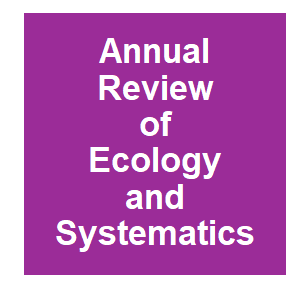
|
Sex chromosome meiotic driveJaenike, J, Annual Review of Ecology and Systematics, 32:25-49. 2001.
Sex chromosome drive refers to the unequal transmission of X and Y chromosomes from individuals of the heterogametic sex, resulting in biased sex ratios among progeny and within populations, The presence of driving sex chromosomes can reduce mean fitness within a population, ... Keywords: driving y, gene drive guidance, gene drive safety, gene drive synthetic, homing endonuceases, regulation, synthetic homing drive |

|
An unusual sex-determination system in South American field mice (genus Akodon): The role of mutation, selection, and meiotic drive in maintaining XY femalesHoekstra, HEH, J. M., Evolution, 55:190-197. 2001.
The mechanism of sex determination in mammals appears highly conserved: the presence of a Y chromosome triggers the male developmental pathway, whereas the absence of a Y chromosome results in a default female phenotype. However, if the Y chromosome fails to initiate the male ... Keywords: driving y, gene drive guidance, gene drive safety, gene drive synthetic, homing endonuceases, regulation, synthetic homing drive |

|
How common are meiotically driving sex chromosomes in insects?Jiggins, FMH, G. D. D.; Majerus, M. E. N., American Naturalist, 154:481-483. 1999.
In summary, we argue that the hypothesis that sex chromosome; meiotic drive is common within the insects is in; fact not proved. We feel that, although it is unlikely that; it will be found exclusively in the Diptera, there is a case; to be made that the Diptera are a hot spot ... Keywords: driving y, gene drive guidance, gene drive safety, gene drive synthetic, homing endonuceases, regulation, synthetic homing drive |

|
Selected lines of Aedes aegypti with persistently distorted sex ratiosOwusuDaaku, KOW, R. J.; Butler, R. D., Heredity, 79:388-393. 1997.
A breeding scheme to isolate X chromosomes sensitive to drive by the T8 (Trinidad) Y chromosome of Aedes aegypti (the MD haplotype) is reported. Crosses with an Australian strain Th.I (Thursday Island) revealed not only sensitive and resistant X chromosomes but also some with the ... Keywords: driving y, gene drive guidance, gene drive safety, gene drive synthetic, homing endonuceases, regulation, synthetic homing drive |
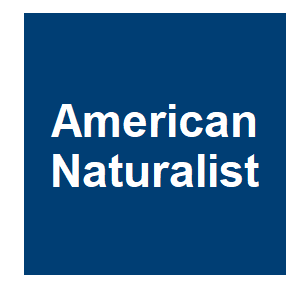
|
Sex-ratio distortion caused by meiotic drive in mosquitosWood, RJN, M. E., American Naturalist, 137:379-391. 1991.
Meiotic-drive genes have been described in two species of mosquito, Aedes aegypti and Culex quinquefasciatus. In both species, a Y (M)-linked gene causes a change in sex ratio in favor of males. More is known about the Distorter gene (D) in A. aegypti, but the gene in C. ... Keywords: driving y, gene drive guidance, gene drive safety, gene drive synthetic, homing endonuceases, regulation, synthetic homing drive |

|
Segregation distortersLyttle, TW, Annual Review of Genetics, 25:511-557. 1991.
Segregation distorters are genetic elements that exhibit the phenomenon of meiotic drive; that is, the mechanics of the meiotic divisions cause one member of a pair of heterozygous alleles or heteromorphic chromosomes to be transmitted to progeny in excess of the expected ... Keywords: driving y, gene drive guidance, gene drive safety, gene drive synthetic, homing endonuceases, regulation, synthetic homing drive |

|
Genetics-driving genes and chromosomesCharlesworth, B, Nature, 332:394-395. 1988.
Thereare several genetic and chromosomal systems in which Mendel's first law - the equal probability of transmission of maternal and paternal alternative alleles or homologues - is violated. This phenomenon was named 'meiotic drive' in 1957 by Sandler and Novitski, who drew ... Keywords: driving y, gene drive guidance, gene drive safety, gene drive synthetic, homing endonuceases, regulation, synthetic homing drive |

|
Thte genetic basis of resistance and sensitivity to the meiotic drive gene D in the mosquito Aedes aegypti L.Wood, RJO, N. A., Genetica, 72:69-79. 1987.
A study has been made on the genetic basis of meiotic drive at the Distorter (D) locus which, in coupling with the male-determining gene (or region) M on the Y chromosome, causes production of excess male progeny. Its effect is regulated by the sensitivity/resistance of the X ... Keywords: driving y, gene drive guidance, gene drive safety, gene drive synthetic, homing endonuceases, regulation, synthetic homing drive |

|
Meiotic drive in the sex-chromosome system of the varying lemming, Dicrostonyx torquatus Pall (Rodentia, Microtinae)Gileva, EA, Heredity, 59:383-389. 1987.
In the varying lemming, numerous fertile XY females occur regularly due to the X-linked mutation (X*). Their frequency both in natural populations and laboratory colonies turned out to be about twice higher than that expected under random segregation of heterochromosomes in both ... Keywords: driving y, gene drive guidance, gene drive safety, gene drive synthetic, homing endonuceases, regulation, synthetic homing drive |
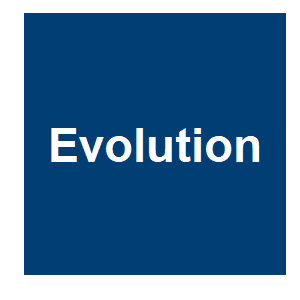
|
A theoretical-analysis of the effects of sex-chromosome aneuploidy on X-chromosome and Y-chromosome meiotic driveLyttle, TW, Evolution, 36:822-831. 1982.
Extra sex chromosomes are normally detrimental to the individual carrying them. In XY (or WZ) sex determining systems, an extra X chromosome in the homogametic sex generates enough X-autosome imbalance to usually cause inviability, or at least sterility. On the oth- er hand, ... Keywords: driving y, gene drive guidance, gene drive safety, gene drive synthetic, homing endonuceases, regulation, synthetic homing drive |

|
Experimental population-genetics of meiotic drive systems .3: Neutralization of sex-ratio distortion in Drosophila through sex-chromosome aneuploidyLyttle, TW, Genetics, 98:317-334. 1981.
Laboratory populations of Drosophila melanogaster were challenged by; pseudo-Y drive, which mimics true Y-chromosome meiotic drive through the; incorporation of Segregation Distorter (SD) in a T(Y;2) complex. This causes; extreme sex-ratio distrotion and can ultimately lead to ... Keywords: driving y, gene drive guidance, gene drive safety, gene drive synthetic, homing endonuceases, regulation, synthetic homing drive |
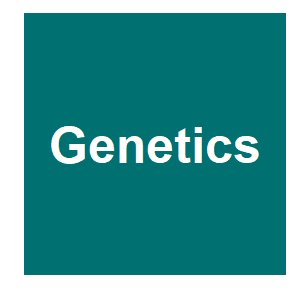
|
Experimental population-genetics of meiotic drive systems .1: Pseudo-Y chromosomal drive as a means of eliminating cage populations of Drosophila melanogasterLyttle, TW, Genetics, 86:413-445. 1977.
The experimental population genetics of Y-chromosome drive in Drosophila; melanogasier is approximated by studying the behavior of T(Y;S),SD lines.; These exhibit “pseudo-Y” drive through the effective coupling of the Y chromosome; to the second chromosome meiotic drive ... Keywords: driving y, gene drive guidance, gene drive safety, gene drive synthetic, homing endonuceases, regulation, synthetic homing drive |
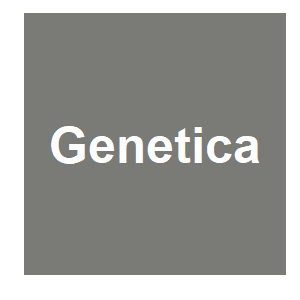
|
Between family variation in sex-ratio in Trinidad (T-30) strain of Aedes-aegypti (L) indicating differences in sensitivity to meiotic drive gene MDWood, RJ, Genetica, 46:345-361. 1976.
Sex ratio in the Trinidad (T-30) strain of Aedes aegypti has remained constant at around 43%? during seventeen years of laboratory culture. The divergence from 50% is due to meiotic drive by the MD gene on the Y chromosome. The driving Y chromosome gives a much more distorted sex ... Keywords: driving y, gene drive guidance, gene drive safety, gene drive synthetic, homing endonuceases, regulation, synthetic homing drive |

|
Extraordinary sex ratiosW. D. Hamilton, Science, 156:477-488. 1967.
The two sexes are usually produced in approximately equal numbers. Fisher (1) was the first to explain why, under natural selection, this should be so, irrespective of the particular mechanism of sex determination. His rather tersely expressed argument has been clarified by ... Keywords: driving y, gene drive guidance, gene drive safety, gene drive synthetic, homing endonuceases, regulation, synthetic homing drive |
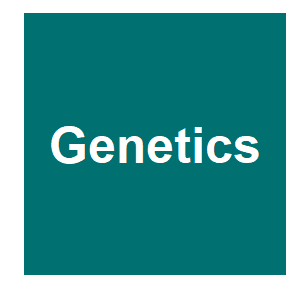
|
Genetic distortion of sex ratio in a mosquito Aedes aegyptiHickey, WAC, G. B., Genetics, 53:1177-1196. 1966.
CRAIG, HICKEY and VANDEHEY (1960) reported that a hereditary factor transmitted by males was responsible for high male ratios in A. aegypti. This phenomenon was designated as male-producing or MP. Males from high maleproducing families produced a high proportion of males in their ... Keywords: driving y, gene drive guidance, gene drive safety, gene drive synthetic, homing endonuceases, regulation, synthetic homing drive |

|
Inherited male-producing factor in Aedes aegyptiG. B. Craig, W. A. Hickey and R. C. Vandehey, Science, 132:1887-1889. 1960.
An inherited factor causes a predominance of males in certain strains and in progeny of single pairs of Aedes aegypti L. This factor appears to be transmitted only by males and is not due to differential mortality, at least in postgametic stages. Mass release of male-producing ... Keywords: driving y, gene drive guidance, gene drive safety, gene drive synthetic, homing endonuceases, regulation, synthetic homing drive |

Contact
David O’Brochta
Foundation for the
National Institutes of Health
geneconvenevi@fnih.org
RSS

